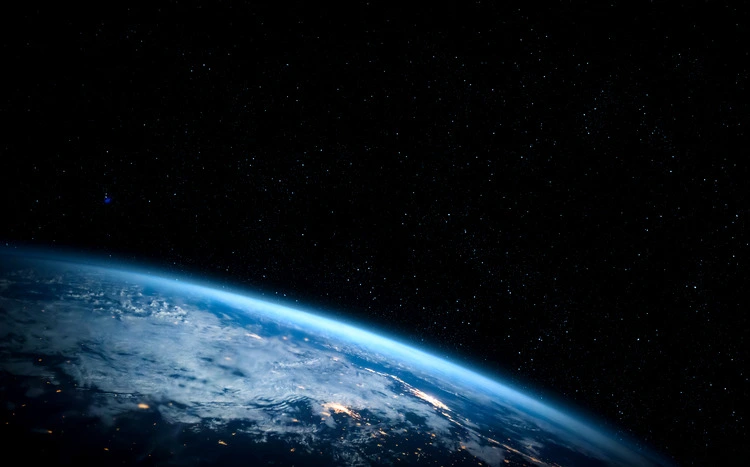

If the Earth is the sole outpost of awareness in the cosmos, our stewardship isn’t optional – it’s essential

By
A century ago, in 1924, Edwin Hubble demonstrated that those fuzzy objects in the sky known as nebulae were actually distant galaxies beyond ours. Since then, their estimated number has increased dramatically. Observations from the Hubble eXtreme Deep Field have raised the count to around 170 billion galaxies.
However, theoretical models – accounting for galaxies too faint, small or distant – suggest a much higher total, up to two trillion.
In 1961, the American astrophysicist Frank Drake formulated the equation that bears his name, attempting to estimate the number of intelligent species we could, in theory, communicate with.
Enjoying this article? Check out our related reads:
The equation multiplies seven highly unknown variables, such as the rate of star formation per year in one galaxy, the average number of planets that could support life per star, the amount of life-bearing planets where intelligent life evolves, and the number of civilisations that develop detectable communication.
Since the input values are so uncertain, the Drake Equation could produce results ranging from zero to thousands of alien civilisations per galaxy.
The Fermi Paradox, formulated in 1950 by physicist Enrico Fermi, revolves around a very simple question: ‘Where is everybody?’ In reality, it’s more paradoxical than ever.
In the past few years, a growing number of exoplanets have been discovered.

At the time of writing, the NASA Exoplanet Archive confirms that 5,967 planets have been found beyond the Solar System, with thousands more potential candidates. Yet Fermi’s quip – sometimes rebranded as ‘The Great Silence’ – remains a paradox.
Human beings once believed they were at the centre of the universe. Gradually, they discovered they were orbiting an unremarkable star on the periphery of one of a myriad of galaxies in a universe expanding at monstrous speed. More staggering discoveries may still lie ahead.
When searching for places hospitable to complex life besides ours, the first rule is to identify exoplanets orbiting in the so-called Goldilocks Zone – at just the right distance from their star to maintain water in liquid form. Only a few do. Do they have an atmosphere? Even fewer comply.
Scientists have now observed that planets in the habitable zone, even with water and an atmosphere, are often marred by high levels of carbon dioxide, which is toxic to life as we know it. So the number of Earth-like candidates decreases further.
But there’s more. ‘The building blocks of life are most likely produced photochemically in the presence of a minimum ultraviolet flux,’ a recent study found. While too much ultraviolet radiation is fatal to life, too little can prevent life from appearing. This casts doubt on the actual habitability of planets around stars other than Sun-like ones.
Other factors add to the suspicion that Earth may be an outlier. Having a planet with a huge mass nearby, such as Jupiter, is very handy – it diverts asteroids that could wipe out life.

Having a magnetic field that deflects charged particles from solar winds and cosmic rays is also extremely convenient. Not to mention a perfectly sized moon that enables tides.
But probably the biggest dividing line is time. The billions of light years that separate us from distant galaxies make contact with other civilisations improbable. And then there’s the 2.1 billion years that evolution took to transition from primitive cells and bacteria to eukaryotic cells with a nucleus – a truly long timespan for life to survive and thrive.
Collectively, these arguments highlight a sobering possibility: while microbial life likely exists here and there, the conditions necessary for complex and intelligent life appear to be exceptionally rare. Even with an enormous number of exoplanets, the fraction capable of supporting a biosphere like the Earth’s could be astronomically small.
‘It’s possible that this is the only place where complex biology has emerged in our galaxy,’ said British physicist Brian Cox in 2021 when he was invited to deliver a message to world leaders gathered in Glasgow for COP26, the 26th UN Climate Change Conference.
‘If that’s true, this is the only island of meaning in a galaxy of 400 billion stars, and you are responsible for it, because you are the world leaders. Therefore, if you destroy it through deliberate action or inaction, then each of you would be personally responsible for destroying meaning in a galaxy of 400 billion suns – potentially forever.’
This doesn’t mean we’re alone – a notion that feels both mathematically unlikely and philosophically bleak. But it does suggest that our kind of life, with all its complexity and consciousness, might be vanishingly rare. If this planet truly is the only haven of meaning among the stars, then safeguarding it isn’t just an environmental duty – it’s a cosmic one.
I’m reading: The Jazz Standards by Ted Giola (Oxford University Press). The stories behind more than 250 immortal songs from the jazz repertoire.



